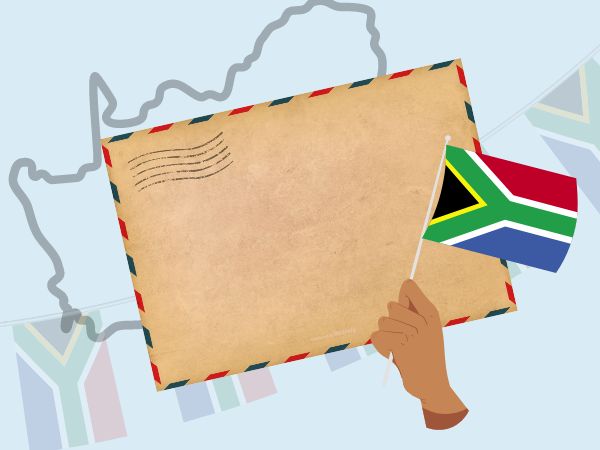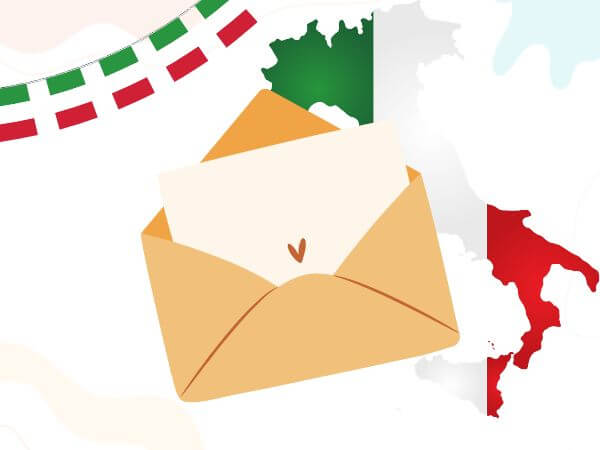Whether it’s a letter of love to family or an initial introduction to a newly-made friend, the written word is a fantastic way to get in touch, wherever you are in the world. And if you know someone who is lucky enough to live in sunny España, that’s Spain to you and me, and you want to take the traditional route of chatting with them by letter, then this is the place to look! Learn how to send a letter to Spain, and guarantee that it will get through to the right person and the right place, by navigating the intricacies of the Spanish postal address system with our easy guide.
If you’re looking for the quickest and easiest way to send a real letter to Spain, let us do the heavy lifting. With e-Snail, you can send a physical letter to anywhere in the world.
Spain Address Format
If you want to send your letter to Spain and you want it to get there quickly and in one piece, then you need to take care with the way you format your recipient’s address.
Firstly, the address needs to be started halfway down your envelope and from halfway across it – basically in the bottom right quarter of your rectangle or square. This is usual in Latin-American countries and allows plenty of space for any postal stamps or markings along the top of the envelope.
Secondly, Spanish mailing addresses are very detailed and must be set out as shown below:
- The first and last name of the recipient of your letter. Include their title if possible.
- The next line should include the street or road on which they live first. Then the house or apartment number. Next, and still on the same line, you need to write the stairwell number, then the floor number and finally, the door number. Note that, as in most European countries, the house or apartment number comes after the name of the street. Also, don’t panic, there are handy abbreviations for each of these criteria coming up, so it won’t be nearly as squashed as it seems!
- This new line needs to include the postcode first, then the city or town in capital letters and then the province of Spain in brackets.
- Finally, write the name of the country on your last line, also in capital letters.
When you’re finished, the address on your envelope should look something like this:
Spain Abbreviations & Symbols
Just as a title such as Mr or Mrs should be used when addressing letters for the Royal Mail, the same applies when sending a letter to Spain but, of course, using the Spanish equivalents.
This could be:
- Sr – señor or D – don (Mr or Sir)
- Sra – señora or Dña – doña (Mrs or Madam)
- Srta – señorita (Miss)
- Dr – doctor (male Doctor)
- Dra – doctora (female Doctor)
- Prof – professor (male Professor)
- Profa – profesora (female Professor)
As well as abbreviations for titles, see the handy list below of abbreviations and symbols which should be used in the mailing address.
- Avda – avenida (avenue)
- C/ – calle (street)
- Ctra – carreterra (highway)
- Pso – paseo (boulevard)
- ° – piso (floor)
- Esc – escalier (stairwell)
And, because it is even more helpful for the postman, an indication of whether the address is on the left or right side of the stairwell or floor should also be included on the line which shows the street name, house number etc.:
- Izda – izquierda (left)
- Dcha – derecha (right)
Prohibited and Restricted Items
Another thing which needs to be remembered if you are sending anything more than a letter to sunny Spain, is exactly what can be sent and how.
It is strictly prohibited to import endangered species of plant or animal or their derivative products if they are protected under the Convention on International Trade in Endangered Species.
It’s also prohibited to send any meat or dairy products to Spain from any country not in the European Union (EU) except for Andorra, Iceland, Liechtenstein, Norway, San Marino and Switzerland. This also includes any goods containing derivatives from meat or dairy such as gelatine in sweets, and cream cakes!
Finally, it is prohibited to send or take any goods into Spain which could be used to inflict torture or other degrading behaviours. The same applies to illicit narcotics, drugs, corrosive substances and nail varnish or gel.
When it comes to restricted items, the list includes cigarettes, alcohol, currency, domestic animals not considered endangered, lottery tickets, ozone depleting substances and sport or hunting guns. Explosives, firearms, defence equipment, batteries and gambling materials all have restrictions applied too and special permits will need to be applied for. If you are sending or taking medication, this must be for personal use and there must be less than 30 days’ worth in amount.
Conclusion
So now you have a great understanding of how to send a letter or parcel to Spain, and what you can actually put in it to avoid getting a call from Customs. Just remember to use this guide for the correct way to write and format the mailing address and ensure that all prohibitions or restrictions are adhered to and you’ll be ready to send your letter all the way to Spain with ease and speed.
Don’t forget, you can also use e-Snail to easily send a physical letter online to anywhere in the world.




